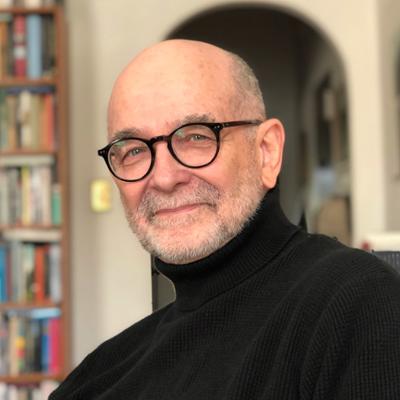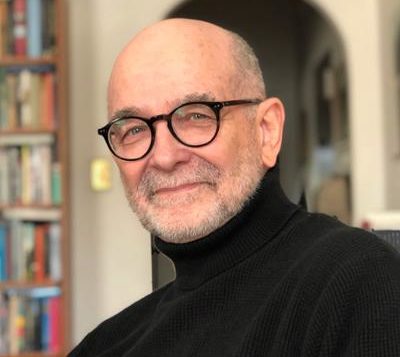
ONE OF THE INSPIRATIONS for this issue’s theme was a recent book by Jeffrey Escoffier titled Sex, Society, and the Making of Pornography: The Pornographic Object of Knowledge(Rutgers, 2021, reviewed in this issue), much of which focuses specifically upon gay male pornography from the postwar era up to the 1970s. As the book’s title suggests, Escoffier is not looking at porn in a vacuum but in relation to changes that were taking place in sexual behavior and attitudes in society at large—changes that were indeed revolutionary in their sweep and rapidity.
Jeffrey Escoffier has a long history of LGBT activism and scholarship. He cofounded two important LGBT magazines— The Gay Alternative, in 1972, and out/look, in 1990—and cofounded the San Francisco Lesbian and Gay History Project in 1977. From 1995 to 2015, he served in the NYC Dept. of Health and Mental Hygiene as deputy director of the Office of Gay and Lesbian Health and the director of the Health Media and Marketing Group. His other books on sexual history in the U.S. include Sexual Revolution(2003) and Bigger Than Life: The History of Gay Porn Cinema from Beefcake to Hardcore(2009).
This interview was conducted by phone in early November.
Gay & Lesbian Review: So, we’re putting together this issue with the theme of “sexual awakenings,” about the origins of gay sexual culture in the postwar era. Your new book deals with precisely this period, tracing the origins and development of sexually-oriented movies and especially gay pornography. The key chapter for our purposes is titled “From Beefcake to Hardcore,” which traces the arc from the physique magazines of Bob Mizer in the 1950s to the full-penetration movies of the early ’70s. Maybe the signal moment was when the performers went from being models and actors to being essentially sex workers. What made that transition possible?
Jeffrey Escoffier: Well, a couple of things are going on at the same time. One is that in the mainstream culture, there’s a shift toward more sexual frankness in general. A lot of that was driven by changes in the legal status of pornography. Straight porn was going through a major shift, from softcore, which featured female crotch shots (the so-called “beaver films”), and then to more explicitly open legs, and eventually hard penises and penetration. Gay porn moved along at roughly the same pace. Bob Mizer and the “physique” magazine people were also beginning to film hardcore, though it wasn’t shown in theaters. It was mostly sold directly to individual subscribers. That was all happening at around the same time. It became possible to make porn if it had an alibi—some kind of “socially redeeming importance,” following the 1957 Supreme Court ruling [Roth v. United States], which basically just meant that you had to have a plot.







